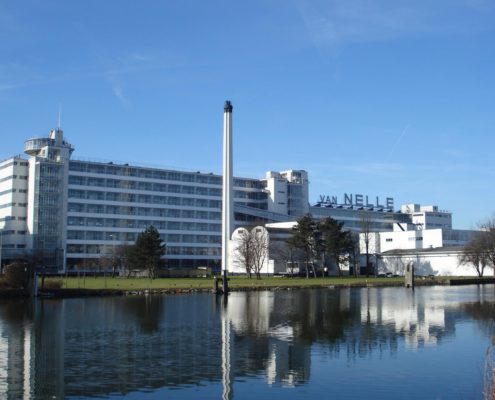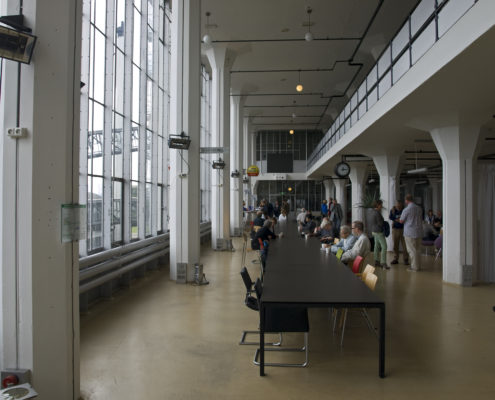Designed and built in the 1920s, the Van Nellefabriek demonstrates an extremely accomplished industrial architecture. It comprises a complex of buildings consisting of several factories aligned along the perspective of a large internal roadway, and close to several means of transport (canals, roads, railway lines). Supported on an internal structure of reinforced concrete, the facades of the main buildings consist essentially of steel and glass, making large-scale use of the curtain wall principle. Via a common purpose agreed between the entrepreneur and the project architects and engineers, the Van Nellefabriek embodies an ideal factory, open to the outside world, whose interior working spaces are progressive, and in which daylight is used to provide pleasant working conditions. It embodies the accomplished realisation of a new kind of factory that has become a symbol of the modernist and functionalist culture of the inter-war period. Lastly it bears witness to the long port-related economic tradition of the Netherlands, in the processing of imported food products (coffee, tea and tobacco) and their marketing in Europe.
Tags: Industrial, Landmark, Rotterdam
The Van Nellefabriek brings together and makes use of technical and architectural ideas originating from various parts of Europe and North America in the early 20th century. It is exceptionally successful both in terms of its industrial setup and its degree of architectural and aesthetic accomplishment. It represents an exemplary contribution by the Netherlands to the Modernism of the inter-war years, and has since its construction become an emblematic example and an influential reference throughout the world.
In the context of industrial architecture in the first half of the 20th century, the Van Nellefabriek is an outstanding illustration of the values of relationships with the environment, the rational organisation of production flows, and dispatch via the nearby communication network, maximum admission of daylight to the internal spaces via the widespread use of a glass curtain wall with metal frames, and open interior spaces. It expresses the values of clarity, fluidity and the opening up of industry to the outside world.
Information provided in part by: UNESCO







